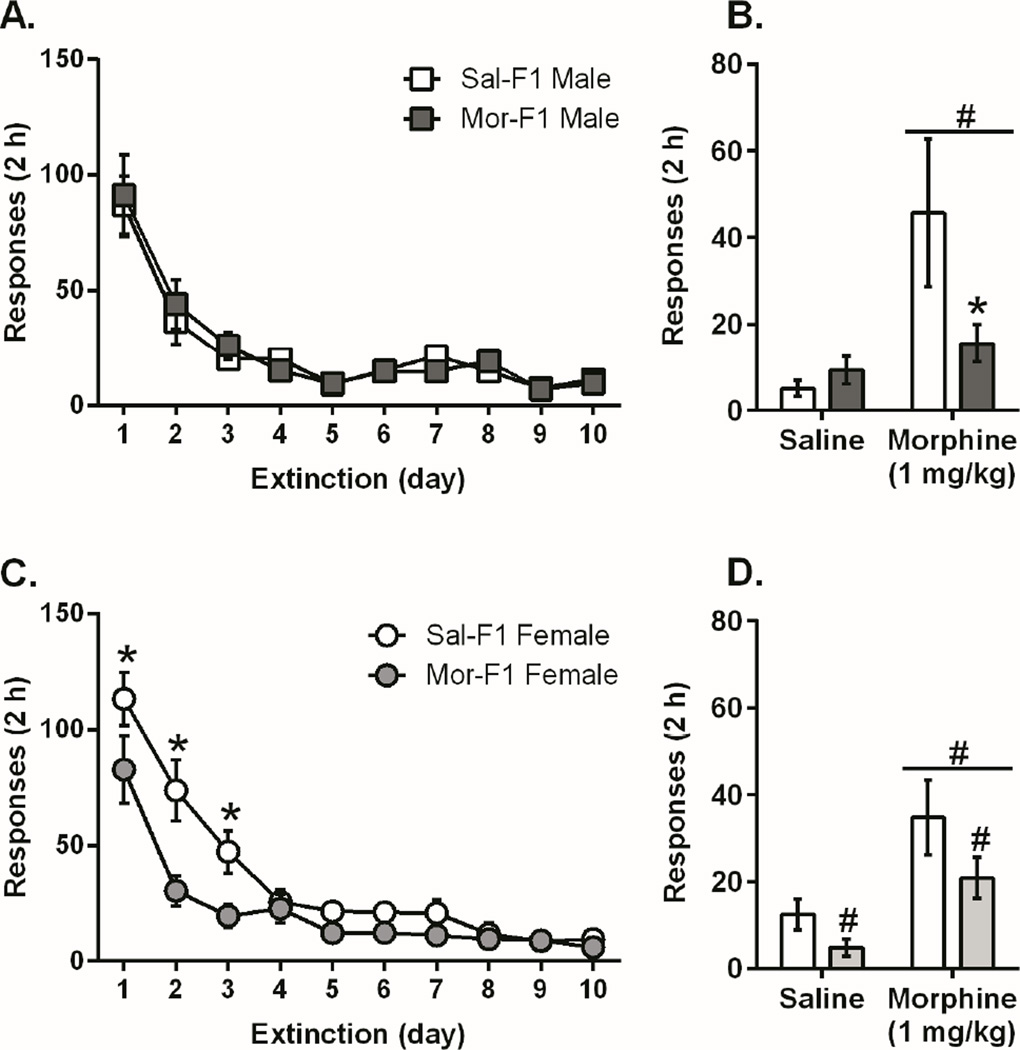Figure 2.
Extinction and Reinstatement in Male and Female F1 Animals. For all panels, data is presented as mean +/− SEM. For the male animals, there were no differences in extinction responding between Mor-F1 and Sal-F1, although there was a main effect of day indicating that the responding in both groups was significantly decreased at the end of extinction [F(9, 126) = 28.7; P<0.0001] (2A). However, analysis of the reinstatement data showed a main effect of dose on reinstatement behavior (2B), [F(1,28)=6.8; p<0.05] demonstrating that both groups reinstated to a priming injection of morphine. There was also a significant interaction [F(1,28)=5.9; p<0.05]. Sidak’s post hoc analysis revealed that Mor-F1 animals responded significantly less than Sal-F1 animals following a morphine priming injection (p<0.05). Female animals also demonstrated extinction with a significant main effect of day [F(9, 135) = 49.36; p<0.0001] but the female Mor-F1 animals also showed blunted responding compared to Sal-F1 females (2C, main effect of maternal treatment [F(1, 15)=6.7; p<0.05]; significant interaction [F(9, 135) = 3.5; p<0.001] with Sidak’s multiple comparisons test showing a decrease in responding on days 1, 2, and 3 (p<0.05). In addition, there was also an effect on reinstatement (2D; main effect of dose [F (1,30)=13.9, p<0.001] indicating that all animals reinstated and main effect of maternal treatment [F(1,30)=4.4, p<0.05] indicating that Mor-F1 females had blunted responding on both reinstatement days). (n=8–9/group, see supplement for detailed n) # main effect p<0.05, *p<0.05 compared to Sal-F1 of same group.

